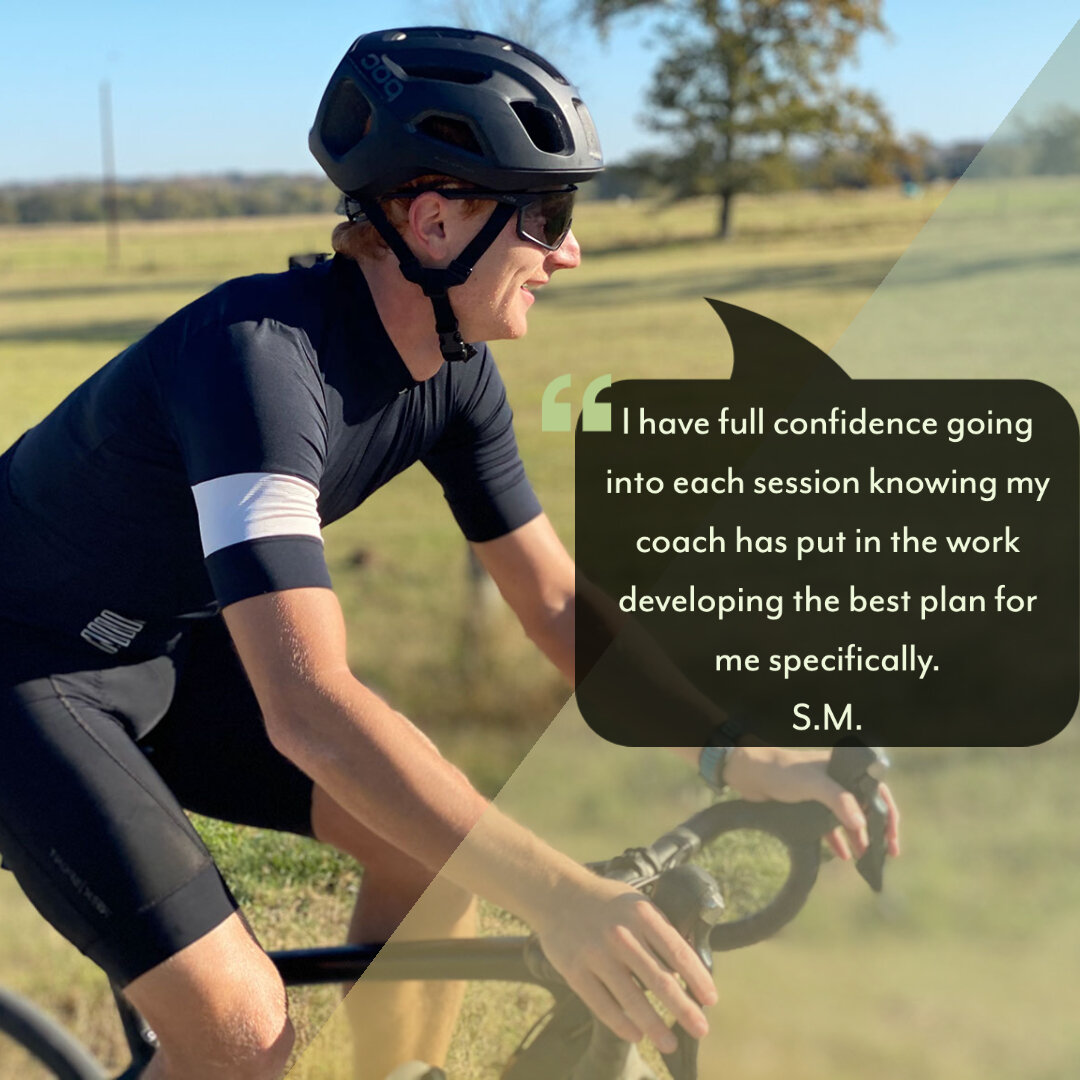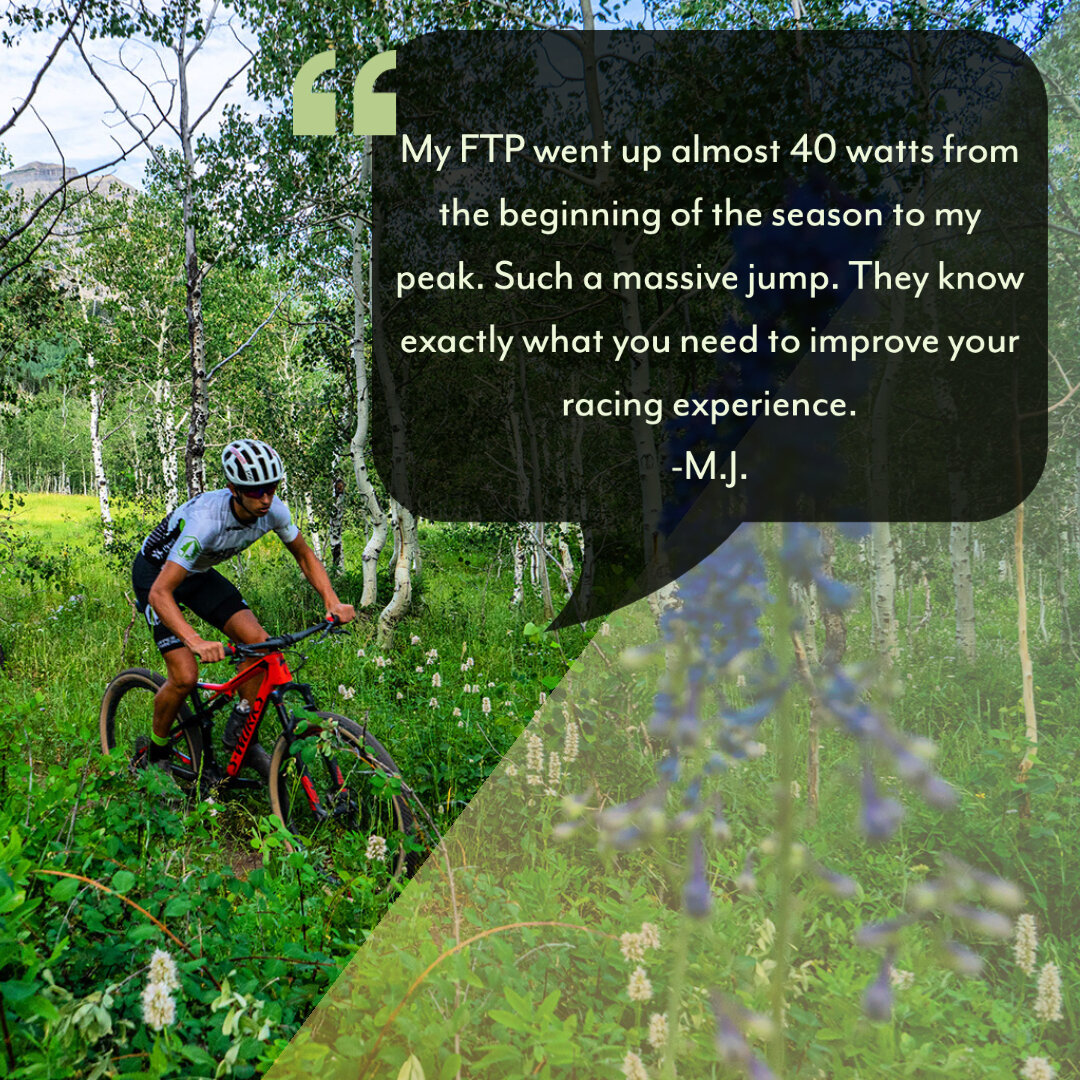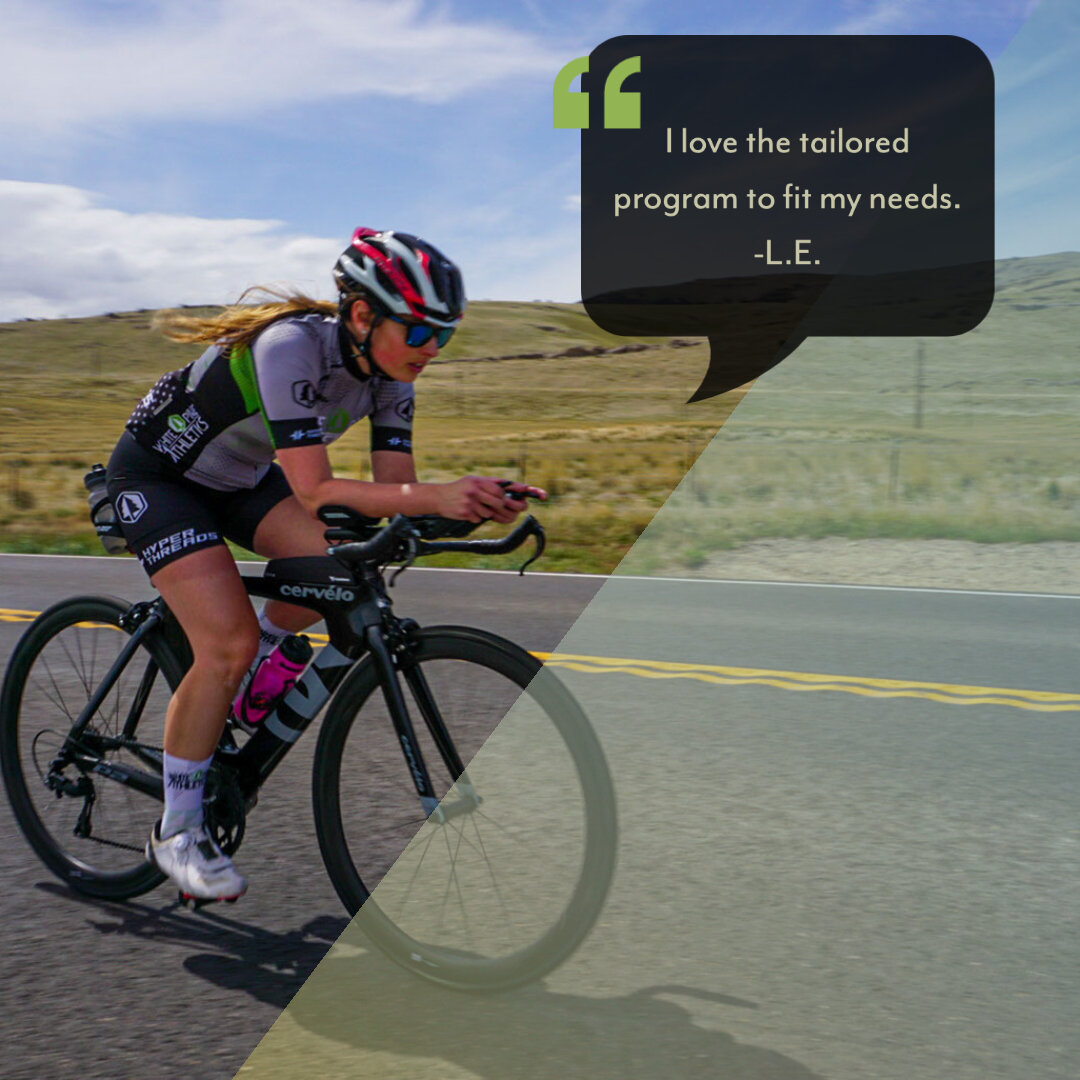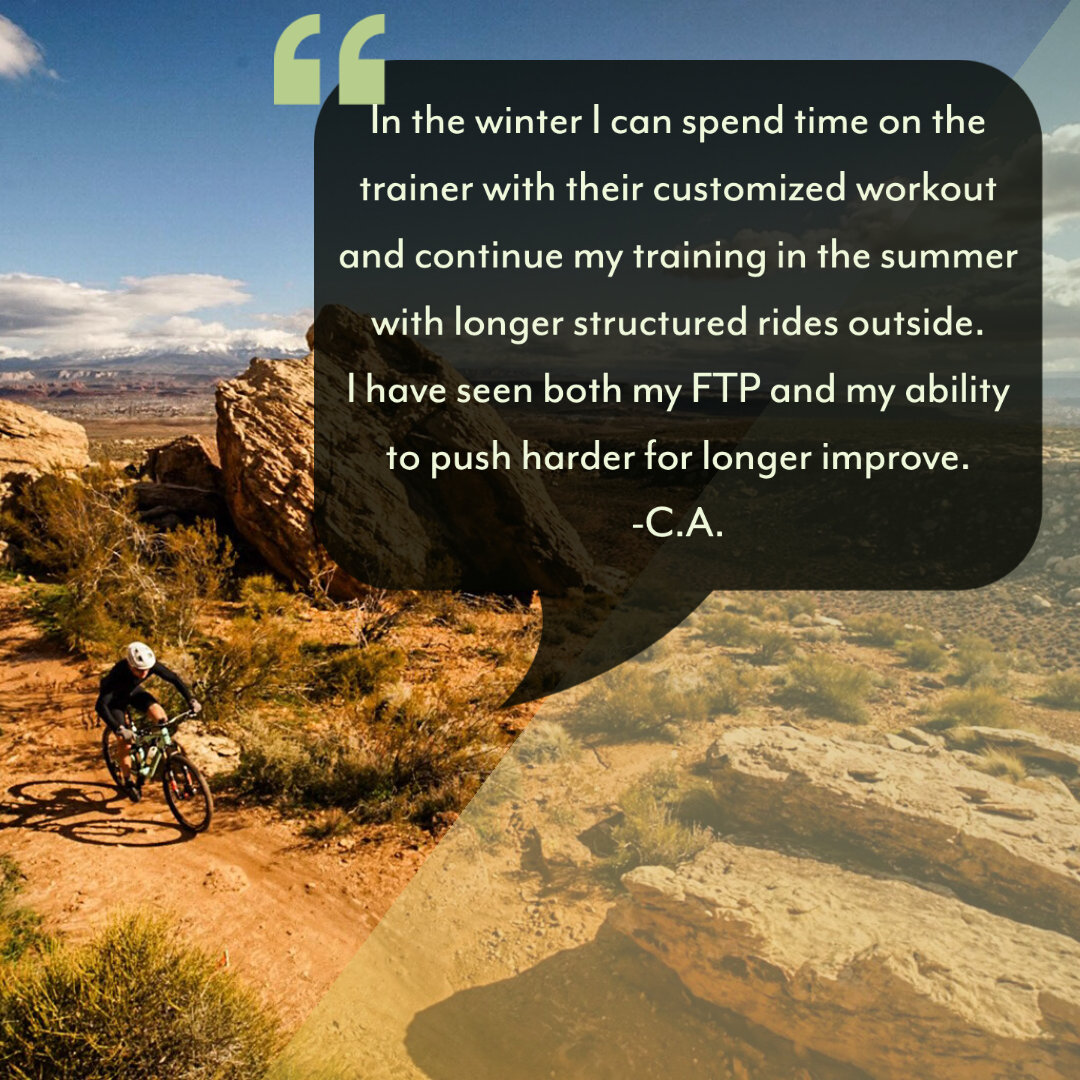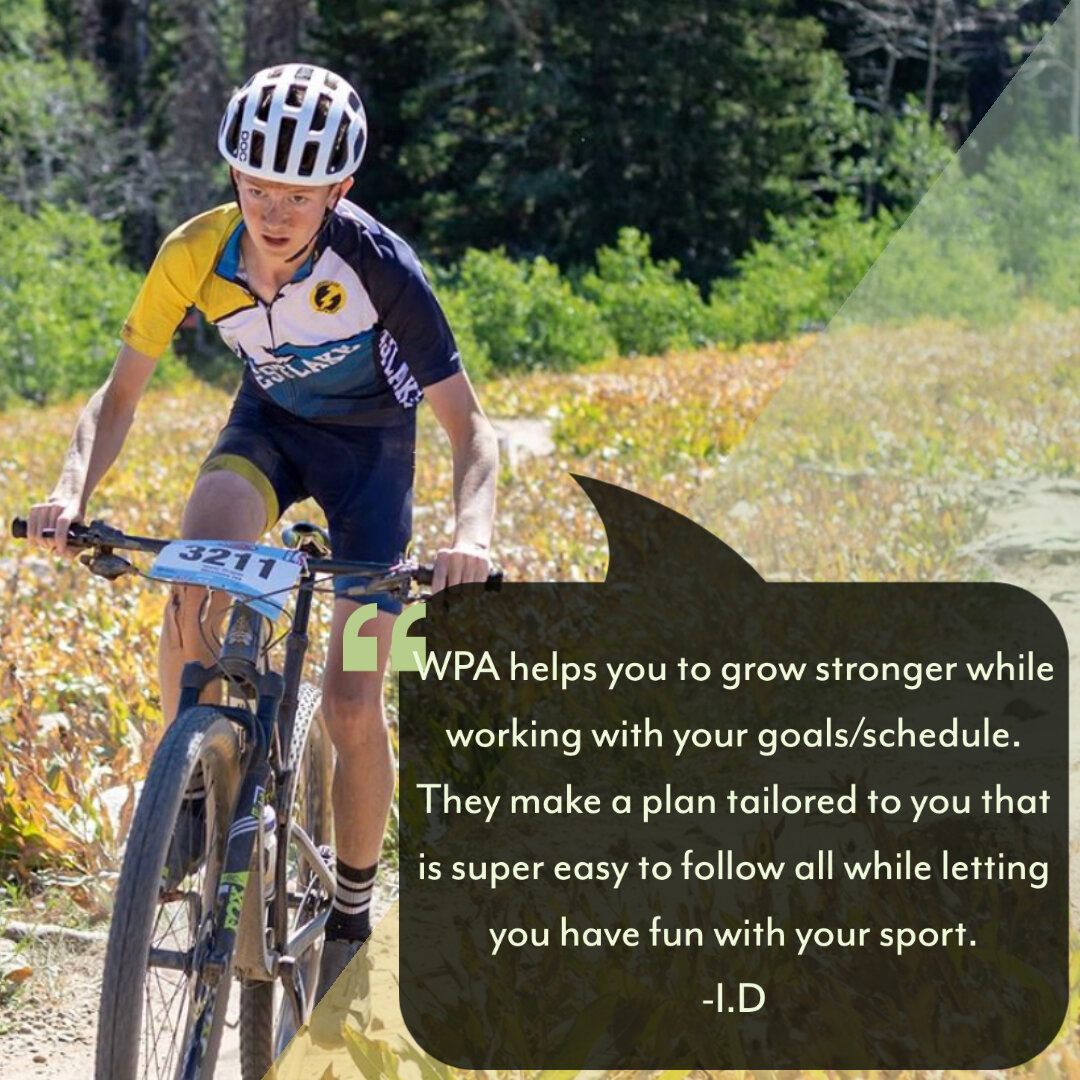by Kyle McFarland
Often times, people assume there’s a major genetic difference between themselves and professional athletes, and in some cases this true. I have been fortunate enough to work with athletes of all caliber, from the off-the-couch amateur to world cup gold medalists and Olympic hopefuls, and from my experience, the only thing that separates a pro from a novice is the way they approach and execute their training. Of course, professional athletes have slightly different lives than the rest of the athletic population: training and competing is their full-time job, after all. But it wasn’t always like that for them - they had to start somewhere. At one point, they were a novice too. Yes, some of them were genetically gifted, but you don’t reach that level with genetics alone. You have to train really, really hard and adopt a, well…pro athlete mindset.
If you participate in any sport at all: running, skiing, football, soccer, cycling…any sport really, you most likely, at some point have developed what I like to call “the other side mentality” in regards to the professional athletes we idolize. The other side mentality generally goes something like this “no wonder he is pro, his job is to train…that’s it” or “well, I would be just as good if I had those resources available too”. While it’s true that many professional athletes are blessed with the time, money and resources to maintain and build upon their ability, they also work really, REALLY hard. There are a few little life-hacks you can utilize to help you train like a pro, improve sport performance and get a little taste of what the “other side” is really like.
1. Develop a “pro mentality”
Amateurs, age groupers, weekend-warriors, whatever you call yourself, we tend to look at and treat our sport as a hobby, or a fun recreational activity that is secondary to work, friends, family and, well… fun. Professional athletes view sport as just the opposite: training comes before friends, before family (to an extent) and certainly before fun.
I’m not suggesting that you blow off your wife’s birthday (dear God, don’t ever do that), or telling you to quit your job, but rather start to treat your sport not as a hobby, not as an “if I have time” activity, but as a pursuit that requires time, commitment, time management, and perhaps some sacrifice. You WILL NOT grow as an athlete unless you develop this mentality. Pros got to where they are by buckling down and working hard, and most likely skipping a night out at the bars to get in a quality suffer-fest at the gym (or a good night’s recovery before a hard effort – more on this in a bit). Remember, as you are watching the Olympics on TV and having an “other side mentality” moment that you are only witnessing the Olympic effort, and not seeing the hours/months/years of focused training that it took to get to that one epic moment.
It all starts with how you view your relationship with your sport. Is it a commitment? Or is it a hobby? Either one is fine, but make the choice.
2. Use Gadgets (And Know How To Use The Data They Provide)
This I can’t stress enough. Technology is awesome. Some examples include bike mounted power meters, foot pods, heart rate monitors, multi-sport watches, simple step counters, bike computers, and spread sheets.
Training is almost useless if you have no way to measure your training load and response. This doesn’t mean you need to go and take out a second mortgage to buy a top of the line laboratory equipment, but training with quantifiable data is a proven tool for getting stronger, faster, better. Every sport has a way to quantify progress: FTP tests, VO2 max tests, Windgates, 2-mile run tests, time trials in the pool or on the field, you name it - there is a way to track your progress, and you can bet that the pros are out there using these same metrics.
However, all the gadgetry in the world means nothing if you don’t know how to use the data it collects. Learn to read and interpret the data, and learn how it applies to your sport. Your FTP (Functional Threshold Power) is 250? Great, but what does that mean for you? That number holds no weight unless you know what to do with it, or how it applies to your sport. Do the research to understand how your FTP will guide every phase of your training – it’s the number that every single training session on the bike will be based off of. It’s also the number that you will use as a guide to pace races appropriately to ensure the best possible outcome – for example, staying within 75-80% of FTP could get you through a 100 mile road race without your legs giving up halfway through but without that nagging feeling that you could/should have gone much harder. Got your heart rate zones figured out? Awesome, now what? Why is it important to determine your zones, how can you incorporate this information into your training? For example, a recovery run can be maximized by keeping your heart rate within your optimal zones – usually Zone 1/Zone 2. Obviously, these examples are generalized, leading to vague guidance, but understanding how to read data and interpret test results helps you maximize your personal training.
Take the time to geek out on this “data stuff” and really learn its effects on your training and performance. If this proves too difficult, confusing, or scary (which is not uncommon- some people are not data junkies and/or are terrified to take training and program design into their own hands), that is completely valid and OK. Building a training program can be very complex, and if not done correctly can have adverse effects on your performance. If you fall into this category, see #3.
3. Hire A Coach
Sometimes all the stoke in the world just isn’t enough to get you out of bed and into the gym. Furthermore, a lot of people either don’t have the knowledge, training, experience, or time to design, execute, analyze, and continue to modify a training program. This is where a knowledgeable and experienced coach comes into the picture. Again, professional athletes have an overwhelming amount of resources at their disposal. Personal coaches, team coaches, physios, team doctors - you name it, they have it.
For the non-pro athlete out there wanting to take their performance to the next level, finding a coach is “easy” - just perform a simple Google search and you will find a million self-proclaimed gurus looking to make some extra cash by transforming your body, mind and soul. However, the trick is to find a qualified and competent coach who offers relevant experience in your sport, and who understands and displays a wealth of knowledge in the realm of physiology, and who has current and widely accepted training/coaching certifications/credentials. Their background should be in education and research-based training. Just because someone is “strong” doesn’t mean that they have the skillset or knowledge to work with athletes and the various complications that come with individual strengths and weaknesses that don’t match their own. You want someone who will customize your training program based on your specific needs and your physiology. Progress without injury is your goal, and that knowledge base is important to accomplish both.
Just because you hired a coach doesn’t mean you should give up on trying to understand your training process. A good coach should be able to explain to you why you are doing what you are doing, how it will help you achieve your goals, and where you are headed in future phases of training. The coach/athlete relationship should be seen more as a partnership – your coach will provide the expertise that will allow you to reach new heights with your training protocols, but they should also be constantly checking in to make sure that your training matches your current goals, schedule, and capabilities. Pro tip – your coach should set SMART goals with you: goals that are Specific, Measurable, Attainable, Realistic, and Time driven.
In my opinion, as biased as it may be, hiring a smart, experienced and organized coach is probably the smartest thing any athlete can do to see significant improvements in sport and see what life on the other side is like. As cheesy as it may sound, you choose the coach, your coach doesn’t choose you. Watch for an alignment of values, communication style, and personality in addition to a qualified background. Your coach needs to have the proper education/background to be effective, but you also need to enjoy working with them so that you’ll have the motivation to stick with it.
(Shameless plug for White Pine Athletics training packages here.)
4. Recover Like A Pro
Professional athletes train A LOT – an insane amount of time is spent training. However, they also realize the huge and absolutely critical need for rest and recovery. Us “normal people” probably work a 40-hour work week. Well, on some level so do the pros. Let’s say a professional cyclist spends 25 hours on the bike each week during their training season. This amount of training is incredibly taxing and is often looked at as the reason they are so strong and fit. But what happens off the bike is equally, if not more important to performance than what happens on the bike. What you do to recover will dictate the gains you see from training.
This is an issue I see way too often with athletes. You get so psyched on training, you nitpick on every detail of the training session, you hit all your numbers and zones. The next day you’re scheduled for a rest day, but you still feel good, fresh even, so you add another session or you go for a run or a hike. It might not seem like a big deal, but you just robbed your body of the opportunity to recover properly before we start to overload it again in the coming days, and you can’t sustain this type of behavior.
On the opposite end of the spectrum, you may be feeling overly fatigued/utterly wasted, or perhaps like you’re getting sick. You need to understand when it’s ok to skip a session or dial back on it, rather than powering through to “hit your numbers” and driving your body into the ground. There is a definite difference between working hard and pushing through the discomfort to see gains in your performance and pushing your body past it’s breaking point and leading to injury or plateaus in your fitness.
Moral of the story, each training session throws off our homeostasis, and our body’s ability to self-regulate effectively. This affects your immune system, sleep requirements, mental/emotional health, and leads to a decline in performance or even injury. As we add stress from training day after day, this becomes amplified, and only gets a chance to self-correct during a recovery block. This is something the pros are very aware of, and in addition to training like a pro, they rest and recover like a pro.
5. Eat Like A Pro
One hugely overlooked component to an athlete’s overall training process is diet. Professional athletes don’t get to where they are by leaving the gym and gorging themselves on Twinkies and Cheetos, and there is so much more to a healthy diet than simply eating foods that are known to be “healthy”.
Knowing the caloric output for a given training session is huge, as is knowing the right nutrients to be eating before, during, and after training to maximize their effect on your various energy systems. This is where I again reference tip #3: Hire a coach. Now, being a great coach doesn’t mean they know everything (or anything) about diet, and sadly many coaches will claim they do. A good coach will tell you when they are out of their scope of practice, and many will be able to recommend you to a solid dietitian or sport nutritionist.
If there is one rule to live by its that abs are made in the kitchen, not in the gym. Eat well, don’t overdo it, definitely don’t under do it, but just focus on making smart decisions and allowing yourself the occasional cheat. This applies to all aspects of your sport. Are you eating enough outside of training/competition? How about during? Mid-activity nutrition is so commonly overlooked by athletes and can have a huge impact on performance. In addition, many people diving into fitness are focused on calories in vs. calories out, but they are not taking the distribution and timing of macronutrients in their diet into account. Or they are overly focused on a calorie deficit and not actually eating enough to support their training load. It is important to understand the impact your nutrition has both on your overall health as well as your functional performance.
Take some time, talk to your coach, research the different nutrition protocols for your sport. Nutrition is just as important as the training stress you subject yourself to throughout the season.
6. Get In The Gym
There is a mindset in athletes that I see all too often: fear of the gym. I hear things like “oh I don’t want to bulk up” or “I want to do my specific sport not sit in a gym”, which I completely understand, but odds are that your sport requires some sort of repetitive movement, such as pedaling a bike, throwing a ball, running, etc. These repetitive movements often lead to imbalances that are often not being addressed through your sports movement. This is where a smart and detailed plan comes back into the picture and addresses not only your primary sport specific muscles, but all those little guys in between as well.
Let’s use mountain biking as an example; when you think weight training and mountain biking your mind probably immediately goes to leg strengthening…squats maybe. But riders will often neglect the core strength necessary to maintain optimal control of their bike after a long time in the saddle, or the amount of stress being put on a riders triceps as they cruise through bumpy terrain. All of these can be addressed with time in the gym and can be done without “bulking up”.
Time in the gym also serves to turn you into a better-balanced, more “durable” athlete. We spoke earlier of injury avoidance being an important part of your training protocol, and strength/mobility sessions are crucial to injury prevention. Mobility/flexibility sessions also have a phenomenal side effect – the increased range of motion can allow you to perform sport-specific tasks with greater ease. For example, a professional rock climber we worked with suddenly found himself able to high-step (reaching high feet on a rock wall) more easily and could generate greater force in that position after undergoing hip-specific mobility training.
Furthermore, your off season should be just that, some brief time away from your sport. Going back to mountain biking: the off season is a great time to work in some mobility training, as well as strength/power development that applies specifically to or complements cycling specific movements. Taking time off here and there is healthy, and allows you to train energy systems you can’t train during a normal training or race season.
7. Bite The Bullet- Sign Up For Race/Event
My final, and perhaps most helpful tip to training like a pro is to throw the excuses in the garbage and sign up for a race or competition/event in your sport. Nothing will drive you more to train than knowing you have a deadline with very real consequences.
For me, it was my first Ironman 70.3. About a year prior to race day I had decided I wanted to race that particular event, but my training was on and off and not super specific. Five months out from race day, I bit the bullet and registered. Now, not only did I drop a boat load of money, but I had real consequences on the line, if I didn’t start training there was absolutely no way I was going to be able to finish that race. For the next five months, I had motivation to get out of bed early, follow a dedicated training plan, attend training camps, and train my butt off.
Signing up for an event also applies a time-limit to your training. It’s important to remember that training stress/intensity can only be applied incrementally. For example, if you signed up for a half marathon, but are currently only running 2-3 miles at a time, you should be less likely to skip sessions. To avoid injury, a general rule of thumb is that you should not be increasing your distance by more than 10% per week (general rule, which may not apply to everyone - see number 3), which means you can’t “start training tomorrow” and hit your goal distance in time.
Sometimes all you need is knowing you spent good money and that you want to milk every last dollar out of that race. Or that race day is coming whether you are ready or not, so you better get off the couch. Plus, on the bright side… you get a medal.

![AdobeStock_102056652 [Converted].jpg](https://images.squarespace-cdn.com/content/v1/58ac695db8a79be910194d54/1546385403223-XUO7C80CKKECH16DGFXI/AdobeStock_102056652+%5BConverted%5D.jpg)






